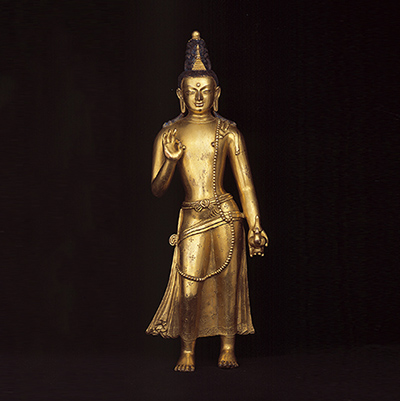
About the Mindfulness Meditation Podcast
The Rubin Museum of Art presents a weekly meditation session led by a prominent meditation teacher from the New York area, with each session focusing on a specific work of art. This podcast is recorded in front of a live audience, and includes an opening talk, a 20-minute sitting session, and a closing discussion. The guided meditation begins at 17:45.
If you would like to attend Mindfulness Meditation sessions in person or learn more, please visit our website at RubinMuseum.org/meditation.
This program is supported in part by the Hemera Foundation with thanks to our presenting partners Sharon Salzberg, the Interdependence Project, and Parabola Magazine.


Related Artwork

Theme: Change
Maitreya, the Buddha of the Future, was a special focus of worship in the Gelugpa tradition of Tibetan Buddhism. Mongols became fervent adherents to this tradition. The promise of the coming of a new age, which the Buddha of the Future ushers in, was especially appealing among the Mongols, who linked this story with their aspirations to reestablish the glory days of the Mongol Empire. The focus of the annual Maitreya Festival procession in Urga (present-day Ulaanbaatar) was a statue of Maitreya made by the great sculptor Zanabazar (1635″“1723). Other Mongolian artists would have been familiar with this public object of veneration.
This graceful sculpture closely follows Zanabazar’s Nepalese-inspired Maitreya compositions, characterized by a soft sleekness of form broken by a subtle asymmetrical linear pattern of cords and sashes. Hallmarks of Zanabazar’s design include the gentle contrapposto pose accentuated by the flare of clinging drapery’s hem, the tiny antelope skin draped over his left shoulder, and the unusually tall pile of hair to accommodate the stupa on his head.
About the Speaker

Tracy Cochran is editorial director of Parabola, a quarterly magazine that for forty years has drawn on the world’s cultural and wisdom traditions to explore the questions that all humans share. She has been a student of meditation and spiritual practices for decades and teaches mindfulness meditation and mindful writing at New York Insight Meditation Center and throughout the greater New York area. In addition to Parabola, her writing has appeared in The New York Times, Psychology Today, O Magazine, New York Magazine, the Boston Review, and many other publications and anthologies. For more information please visit tracycochran.org.
